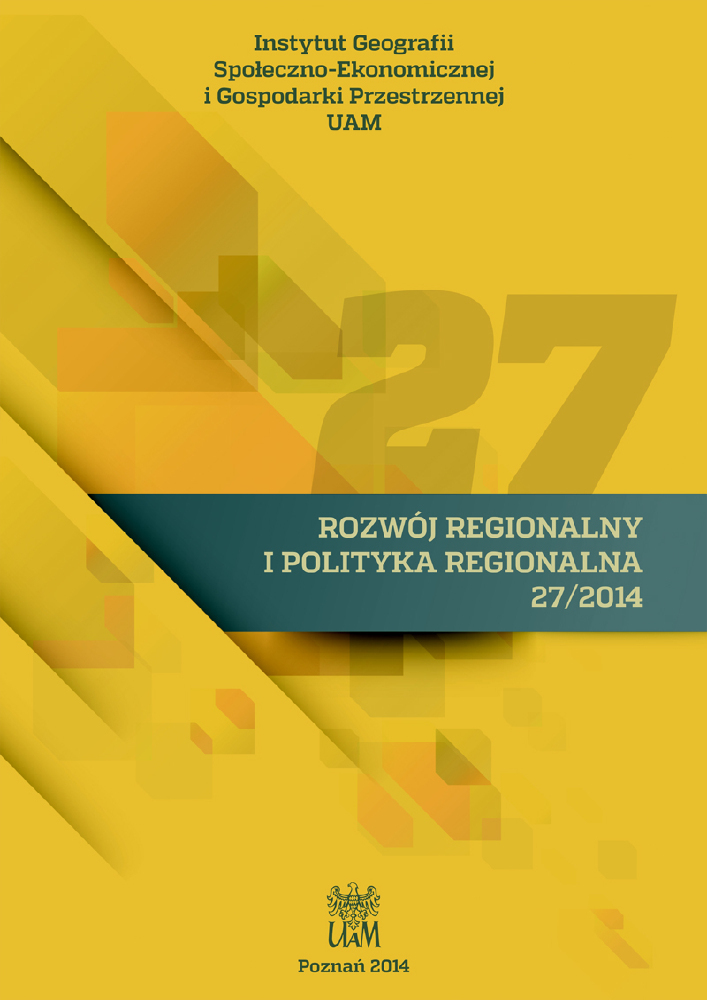Abstract
Transportation is one of the domains of economy in which Poland, due to its accession to the EU in 2004, is obliged to adhere to the EU law. Sustainable development has been the paramount objective of the EU sectoral policies and thus the EU is the driving force in undertakings which aim at sustainable development of transportation. EU transportation policy encourages development of economic, safe and eco-friendly transportation. For this reason, the EU strongly supports all undertakings which lead to the improvement of public transportation in agglomerations. Well-organised and dependable public transportation definitely improves the quality of city life and it may contribute to the reduction of crowd and improvement of the environment.The tendency to modernise comprehensively urban systems of public transportation has arrived to Poland from Western Europe. The processes have been initiated by the possibility of subsidising public transportation projects thanks to substantial amount of money from the EU funds. The money allotted for implementation of cohesion policy and regional development policy has clearly changed the image of public transportation in many Polish cities. By dint of these policies, it has become possible to initiate long-delayed investments, i.e. not only the purchase of a fleet of new trams and buses, but also modernisation and development of transportation infrastructure.
For Poznań, the first decade of Poland’s EU membership has turned out to be a period of modernisation of the system of public transportation and possibility to buy modern low-floor trams and busses. Curiously, a company from the Wielkopolska voivodeship has won the tender to deliver the fleet three times, thereby strengthening its position on the market. Moreover, three new tram lines have been constructed. The first one, which crosses the city centre, has contributed to the optimization of the tram network and the revitalization of urban spaces. The second one has been built on the outskirts of the city and owing to the fact that in almost half of its length it passes through the tunnel, it is separated from the road traffic. The third one ensures fast and direct transport from the Northern districts of Poznań to the vicinity of main railway station.
Apart from that, Poznań has undergone the following changes concerning the organisation of public transportation: separation of the organiser and the carrier of transportation; integration of railway, tram and bus transportation both in the city area and within the agglomeration; introduction of the flexible tariff and modern system of fees. Currently, the authorities of Poznań are planning subsequent investments in the development of public transportation, which can be subsidised in the new budget perspective of the EU.
References
Dyrektywa 2004/17/WE Parlamentu Europejskiego i Rady z dnia 31 marca 2004 r. koordynująca procedury udzielania zamówień przez podmioty działające w sektorach gospodarki wodnej, energetyki, transportu i usług pocztowych (Dz.U. UE L 134 z 30.04.2004).
Gieżyński T. 2012. Pocztówka z Franowa. Świat Kolei, 10: 46–47.
Madrjas J. 2011. Linie tramwajowe za miliard. Rynek Kolejowy, 8–9: 46–48.
Potrykowski M., Taylor Z. 1982. Geografia transportu. Zarys problemów, modeli i metod badawczych. Państwowe Wydawnictwo Naukowe, Warszawa.
Rozporządzenie (WE) nr 1370/2007 Parlamentu Europejskiego i Rady z dnia 23 października 2007 r. dotyczące usług publicznych w zakresie kolejowego i drogowego transportu pasażerskiego oraz uchylające rozporządzenia Rady (EWG) nr 1191/69 i (EWG) nr 1107/70 (Dz.U. UE L 315 z 3.12.2007).
Stiasny M., Danyluk Z. 2013. Atlas sieci tramwajowych Polski 2014. Wydawnictwo Eurosprinter, Rybnik.
Uchwała nr LXIV/1010/VI/2014 Rady Miasta Poznania z dnia 18 marca 2014 r. w sprawie przyjęcia „Planu Zrównoważonego Rozwoju Publicznego Transportu Zbiorowego dla Miasta Poznania na lata 2014–2025”.
Ustawa z dnia 16 grudnia 2010 r. o publicznym transporcie zbiorowym (Dz.U. 2011 nr 5, poz. 13).
Wesołowski J. 2008. Miasto w ruchu. Przewodnik po dobrych praktykach w organizowaniu transportu miejskiego. Instytut Spraw Obywatelskich, Łódź.
Wyszomirski O. (red.) 2010. Transport miejski. Ekonomika i organizacja. Wydawnictwo Uniwersytetu Gdańskiego, Gdańsk.
http://www.funduszeeuropejskie.gov.pl/
License
Copyright
© 2014 IGSEiGP, Uniwersytet im. Adama Mickiewicza w Poznaniu
OPEN ACCESS
